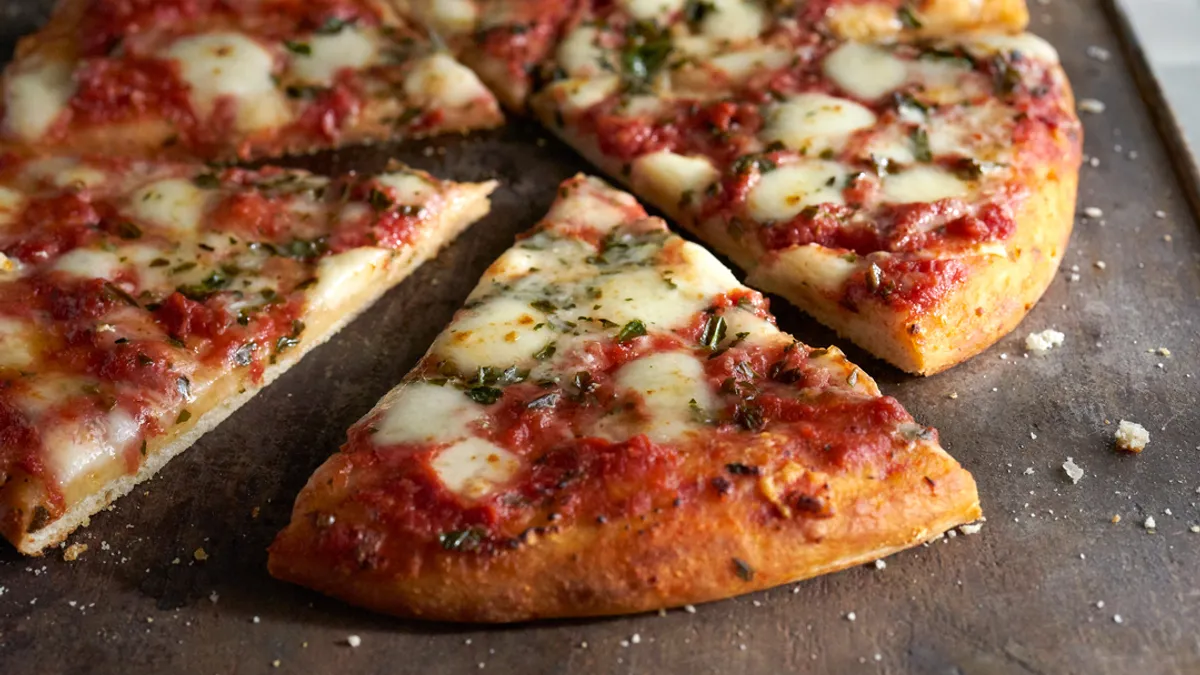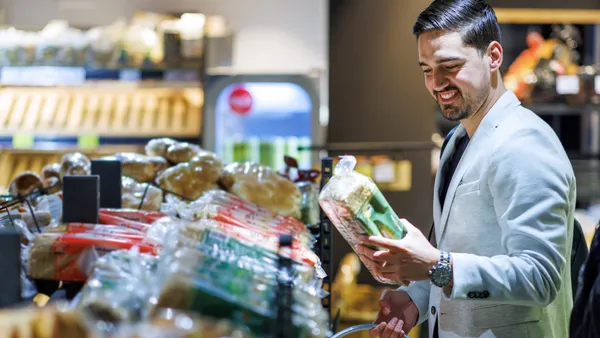Even — perhaps especially — in tough times, simple pleasures such as pizza offer a taste of happier days. Yet, while the past couple of years have been tough, indeed, they've also been a boon to the frozen-pizza sector. As we enter a new normal, retailers can keep the party going by shaping their product mix to match what today's shoppers want.
The past couple of years have been challenging for everyone. But as businesses and individuals begin to get back on their feet, they may take a lesson in resiliency from — perhaps an unexpected place — the frozen-pizza sector.
Why? For one, 28% of consumers purchased more frozen pizza during the pandemic than they were purchasing before, per Acosta research — reflecting just the sort of "sticky" appeal that every CPG category seeks.
Beyond that, it's hard to imagine a product better positioned to fill the gaps that pandemic living opened. Frozen pizzas offered consumers comfort in the form of familiar, family-friendly fare that helped them re-create the pizzeria experience even in the shelter of their own homes.
But consumers weren't alone in finding comfort in frozen pizza's perennial popularity. Retailers, too, benefited from the revenue that rolled in as traffic in the freezer aisle heated up.
So as pizza shops reopen and society embraces a new normal, can retailers keep the frozen-pizza party going?
They sure can — if they stock pizzas that bring shoppers back for more.
Frozen heats up
It's hard to underestimate just how important the frozen-pizza sector is to retailers — and to their shoppers. Some estimates go so far as to place the proportion of U.S. consumers who eat frozen pizza at well above half the population.
COVID-19 only intensified that demand, shared Ritu Mathur, VP of Marketing at Amy's Kitchen, with predictions suggesting it’ll still be here even when COVID-19 isn't. "We've seen forecasts indicating that the frozen-pizza category will extend its relevance at least into the 2021-to-2025 term," Mathur said.
But pizzas weren't the only SKUs that enjoyed a COVID bounce. In fact, the entire supermarket frozen department became something of a safe harbor during the pandemic's storm.
It makes sense, Ritu surmised. "It's common knowledge that COVID got consumers cooking from home, but after a while, cooking fatigue set in, and frozen became the go-to solution for flavor and convenience."
The upshot: Frozen-food sales grew 20.6% from 2019 to 2020, according to Acosta, compared with 13.5% growth for total-store food sales. And fully a year after the stockpiling started, freezer aisles still outpaced total-store sales, with the frozen till up 2.6% through April 3, 2021, while overall food sales grew only 1.2%.
"Frozen pizzas contributed mightily to that growth," Mathur pointed out. "They save the day by being a go-to solution that brings families together, lets homebound consumers shake things up and experience new flavors and provides the comfort consumers are seeking now."
Evolving trends
That power has lasting appeal, even without a pandemic in the background. And savvy retailers will exit today's still-tentative climate understanding that by curating a frozen-pizza mix that speaks to consumers' needs, they'll maintain a sturdy level of engagement over the long term.
But consumers' needs — and, by extension, their frozen-pizza priorities — are in flux and have been since before COVID-19 kicked the category into high gear. This is especially true in the natural and specialty sectors, where consumers bring heightened expectations to the table.
As Ritu observed, "We see a handful of macro and emerging trends driving these core need states" — among them what Mathur described as classic comfort, plant-based eating and global exploration. "And frozen pizzas is a category that can bring them to life."
Ticking all the boxes
For a case in point, look no further than Amy's vegan Margherita pizza.
"The tomato-basil-mozzarella concept is already a comfort classic," Ritu explained, "but it carries a touch of elevation, too, with its fragrant basil and our thinner, hand-stretched crust. Then we take things a step further by replacing the traditional shredded mozzarella with a vegan mozzarella-style cheese that stretches, melts and tastes like the original. And because it's Amy's, it's made with organic ingredients."
Not only does the pie tick those comfort, plant-based and international boxes mentioned above, but when offered alongside the brand's classic Margherita made with dairy cheese, it also helps retailers cover their bases around both plant-based and traditional frozen-pizza demand.
"One thing we've noticed is that our vegan Margherita has a higher repeat-purchase rate than its competitors," Mathur noted. "But maybe even more important is that we've noticed our shoppers displaying a high degree of exclusive purchasing behavior between vegan and dairy pizza offerings. So the lesson for retailers, particularly in the specialty and natural markets, is to give their shoppers both. No one wants to be left out, right?"
True values
Amy's has tracked a similar purchasing pattern vis-à-vis their gluten-free pizzas, Mathur added — proving that "consumers have gotten used to having both brands and grocers cater to their lifestyle needs, no matter how niche they may seem. As everywhere else, they want equity in the supermarket, too."
But whether consumers follow special diets or eat omnivorously, Mathur continued, they tend to base their pizza purchase decisions on topping, crust type and price above all else. "So retailers should select their product mix with an eye to those factors."
On the matter of price, though, Mathur noted that Gen Z and millennials spend more on the frozen-pizza category than do other generations — "and they choose Amy's. In other words, if a pizza measures up to their quality criteria and values, they'll pay the price."
And values count, Ritu emphasized. "We're committed to transparency about where our ingredients come from, how our products are made and our impact on people and the world, and consumers are taking note. They’re taking company values into consideration when making purchasing decisions."
Building loyalty
The bottom line is that specialty- and natural-channel shoppers have priorities that parallel those of brands like Amy's, Ritu said. "Mirroring those priorities is how we've stayed steps ahead of pizza trends and drivers — and held the natural channel's top pizza spot in the process." Adding that Amy's makes two of the channel’s top-five bestselling pizzas and beats the competition with faster-moving products and higher repeat rates.
By reflecting those priorities in their own product mixes, grocers can build customer loyalty, increase basket size and spend, and encourage higher purchase frequency and repetition, Ritu said. "Converting more shoppers into Amy's shoppers will accelerate sales and margin across the pizza category — even in a world post-pandemic."










